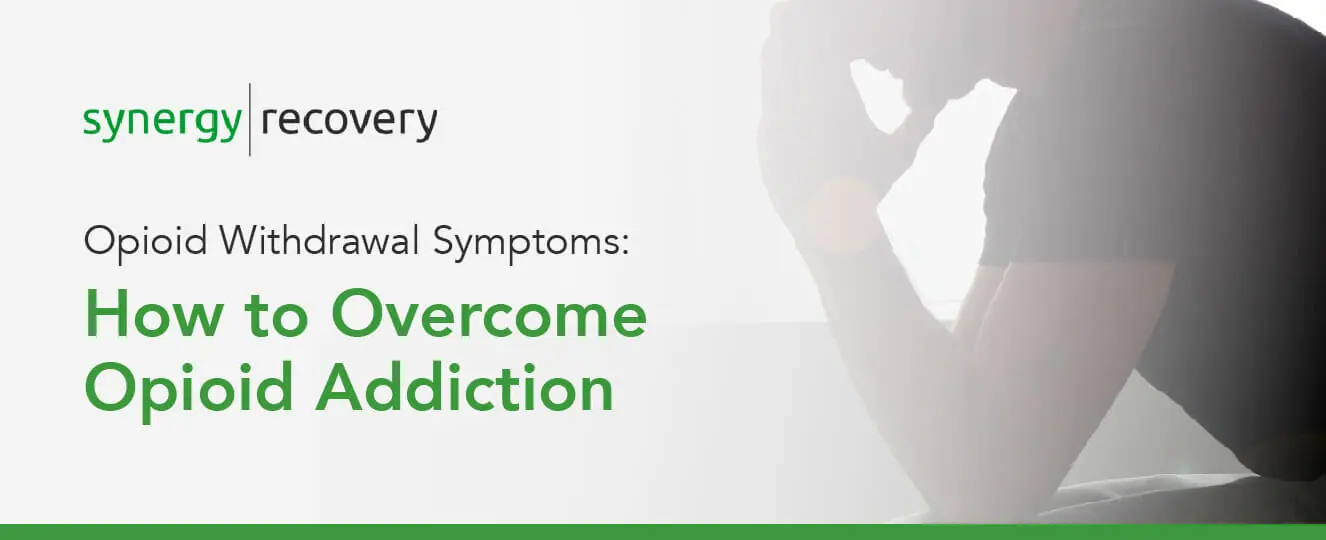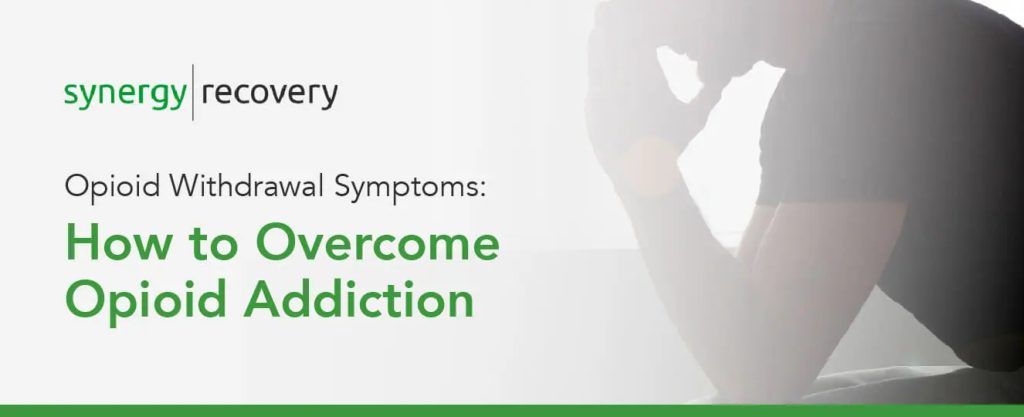
Since the beginning of the 21st century, the opioid crisis in the U.S. has been steadily worsening. Between prescription opioids and illicit opioids, about 67,300 Americans die from an opioid overdose each year. To avoid overdose deaths and curb the opioid addiction epidemic, it is essential for people to understand how opioid addiction works, the effects of detoxing and how to get help.
We’ll cover the various types of opioids and provide a scientific explanation for why they are so addictive before discussing how to address withdrawal symptoms, a typical opiate withdrawal timeline and opioid withdrawal treatment options.
Opioids: Functions and Types
Also referred to as narcotics, opioids are medications prescribed to mitigate severe or persistent pain. Most often, opioids are used by patients who are recovering from surgery, suffer from severe pain due to cancer, have sustained a serious injury or experience chronic headaches or backaches. The form and strength of the opioid a doctor prescribes varies by patient, situation and intensity of the pain being addressed.
The type of opioid used to manage a health issue will fall into one of the following categories:
- Natural: Naturally occurring opioids are referred to as opiates, which are nitrogen-containing base chemical compounds present in plants, like the opium poppy.
- Semi-synthetic: A semi-synthetic opioid is a human-made substance created in a lab by using natural opiates.
- Synthetic: Completely synthetic opioids do not include any natural opiates in their composition.
Below are seven of the most common opioids and their uses:
- Codeine: This is a naturally occurring opioid used for mild to moderate acute pain.
- Morphine: This is a naturally occurring opioid used for severe pain, like an epidural.
- Hydrocodone: This is semi-synthetic opioid used to treat severe pain, also known by the brand names Vicodin and Palladone.
- Oxycodone: This is a semi-synthetic opioid used for severe and chronic pain, also referred to as the brand names OxyContin and Percocet.
- Oxymorphone: This is a semi-synthetic opioid used for acute and chronic pain, also known as the brand name Opana.
- Fentanyl: This is a synthetic opioid often used to manage pain post-surgery.
- Buprenorphine: This is a synthetic opioid used to treat constant pain.
Along with these legal varieties of opioids, there are other illegal and highly addictive forms of opioids. These types of opioids have no sanctioned medical use. The most well-known illegal opioid is heroin, which is a semi-synthetic drug made from morphine. Non-pharmaceutical forms of fentanyl are also illegal.
How Does Someone Become Addicted to Opioids?
Although originally created for medical purposes, opioids are easy to become addicted to and often misused. Those who take opioids regularly can quickly come to depend on them, regardless of whether the opioids were prescribed legally or obtained illegally. Opioid addiction is a dangerous condition that can lead to fatal overdoses.
Why Are Opioids So Addictive?
To understand the incredibly addictive nature of opioids, you first have to understand the science behind the way opioids interact with the brain. Opioids connect with proteins known as mu opioid receptors, which are located on nerve cells in the brain, gut, spinal cord and other parts of the body. Once the opioids have attached to the mu opioid receptors, the opioids block any pain messages the body may send to the brain through the spinal cord. In doing so, opioids effectively relieve pain.
In addition to stopping pain, the linkage of opioids to mu opioid receptors triggers the same biochemical processes in the brain that reward individuals with feelings of pleasure when they engage in other activities like eating or exercising. Although opioids are intended to be taken to mitigate pain, their ability to activate these reward processes when pain is absent motivates some to take opioids purely for pleasure.
Opioids activate the brain’s mesolimbic reward system that releases the chemical dopamine, which causes feelings of pleasure. After dopamine is released, the brain forms a lasting memory that associates that pleasure with the circumstances that led to it. These memories are known as conditioned associations and directly tie opioids to positive feelings — resulting in more cravings and a willingness to seek out drugs despite any obstacles.
In the early stages of abuse, most people take opioids repeatedly to keep stimulating the brain’s reward system. However, the brain develops a tolerance for opioids over time, meaning the drugs must be taken more frequently or at higher doses to achieve the same feeling of pleasure. The chronic use of opioids can alter the brain’s regular functioning and cause brain abnormalities that lead to drug dependence.
Once the brain has become accustomed to receiving opioids regularly, the body becomes dependent on the drugs and experiences withdrawal symptoms, such as nausea, vomiting or depression, in their absence. To avoid the symptoms of withdrawal, opioids need to be taken continually, which perpetuates the cycle of intense cravings and compulsive use. Developing a long-term addiction to drugs can lead to complex, wide-ranging and long-lasting abnormalities in the brain.
What Can You Do to Avoid Becoming Addicted?
Because becoming addicted to opioids is dangerously easy, certain steps should be taken to minimize the risk of developing a dependence on the drugs. If you need to take opioids to manage pain, talk with your doctor about how to prevent an opioid addiction. In cases of acute pain, a doctor will be able to figure out the lowest dose possible you can take for the shortest time needed while still relieving the pain.
After surgery or an acute pain injury like a broken bone, it is safest to take opioids for only a few days. Be sure to take opioids exactly as prescribed, monitor your conditions and work with your doctor to taper off the dosage. Due to their highly addictive nature, opioids are not a very safe or effective long-term solution for chronic pain.

Instead of relying solely on opioids, consider one of the following treatment options:
- Non-drug therapies: Alternative pain management therapies that do not involve any drugs include meditation, acupuncture, massages and more.
- Combination therapy: Pairing opioids with other medications or non-drug treatments can help patients get relief from pain while using lower dosages of opioids.
- Implants: For chronic pain, a pain medicine specialist may recommend a spinal cord stimulation, which involves planting a device in the back to block pain via electric pulses to the nerves and spinal cord.
How to Spot the Symptoms of Opioid Withdrawal
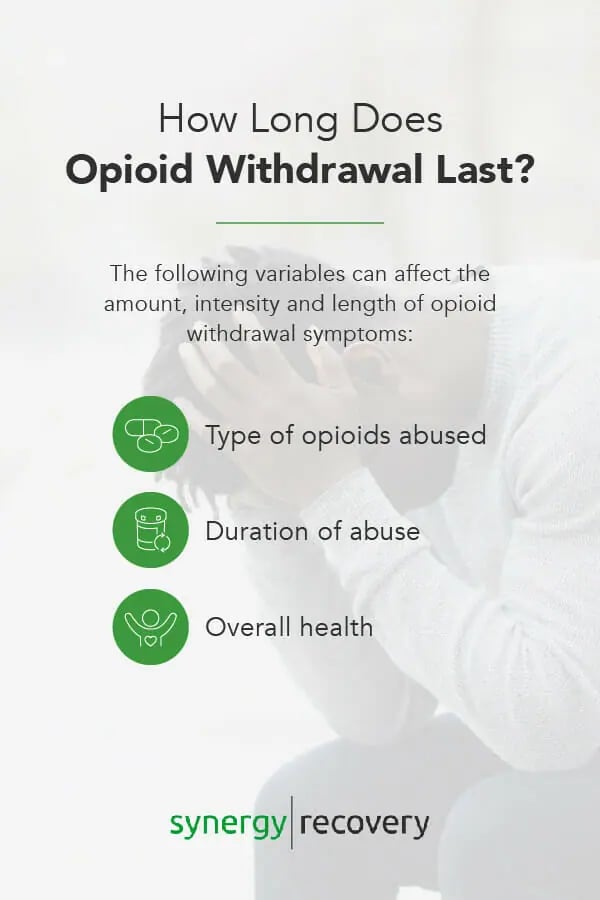
Once a person’s brain has become dependent on opioids, the brain often struggles to function normally without the drugs. This reliance on high doses of opioids typically results in withdrawals when opioid use stops. In general, opioid withdrawal symptoms start slowly and gradually intensify until reaching a peak a few days after the patient’s last opioid use before beginning to fade.
Common opioid withdrawal symptoms include:
- Jitters
- Abdominal pain
- Irritation
- Anxiety
- Digestive problems, such as diarrhea and vomiting
- Insomnia
- Shivers
- Sweating
- Increased cravings
- Nausea
- Headaches
- Fatigue
- Panic attacks
Although these symptoms are unpleasant, they are different from an opioid overdose, which is far more serious. An overdose is recognizable by the following signs:
- Shallow breathing, slow breathing or respiratory failure
- Small pupils
- Confusion
- Unresponsiveness or loss of consciousness
- Blue skin due to poor circulation
In the case of an opioid overdose emergency, call 911 immediately. First responders will be able to administer naloxone, which is an antidote to opioids that will fully reverse the effects of an opioid overdose if delivered in time. In some areas, those at a higher risk of an opioid overdose can receive a naloxone prescription to have on hand at home in case of emergency.
How Long Does Opioid Withdrawal Last?
The exact timeline of opioid withdrawal will be different for each patient and depends on a few key factors. The following variables can affect the amount, intensity and length of opioid withdrawal symptoms:
- Type of opioids abused: Short-acting opioids like oxycodone and hydrocodone are broken down by the body’s systems and exit the bloodstream quite quickly, whereas slow-acting opioids like buprenorphine and methadone take longer for the body to eliminate. For example, methadone is stored in body fat, which is why it takes longer to leach the drug out of the fat in the body.
- Duration of abuse: Repeated exposure to opioids alters the brain’s mechanisms of dependence, which means prolonged drug use produces more long-lasting changes in the brain. Because this dependence means the body will crave more drugs to abate withdrawal, a longer history of abuse tends to make withdrawal symptoms more severe and drawn out.
- Overall health: An individual with poor health to begin with will have a more difficult time dealing with withdrawal symptoms. A strong immune system will be able to address withdrawal symptoms efficiently. In addition, those with previous mental health struggles may feel the effects of withdrawal more strongly.
While these factors may affect the precise timeline of withdrawal, symptoms generally follow this outline:
- Six hours-12 hours since last opioid use: Although the clock for extended-release opioids will start ticking a bit later than short-acting opioids, withdrawal symptoms like shivering and teeth chattering will start to show up about six hours-12 hours after the drug has been completely absorbed.
- 12 hours-72 hours since last opioid use: In this phase, the most intense opioid withdrawal symptoms begin, including digestive issues, nausea, cravings and anxiety or panic attacks.
- 72 hours-120 hours since last opioid use: At this point, withdrawal symptoms will begin to gradually taper off until cravings entirely disappear.
- Six days to a year since last opioid use: In this period, a patient is out of the acute withdrawal timeline. However, they may still experience some post-acute withdrawal symptoms.
- One year or more since last opioid use: After over a year of sobriety, a patient has successfully treated their opioid addiction.
What is Opioid Post-Acute Withdrawal Syndrome?
Even after abstaining from drugs for the duration of the acute withdrawal timeframe, a person may still be at risk of persistent symptoms due to post-acute withdrawal syndrome (PAWS). PAWS is a term for the set of impairments, such as mood disorders or insomnia, that may stick with someone recovering from opioid addiction after the first week of being clean.
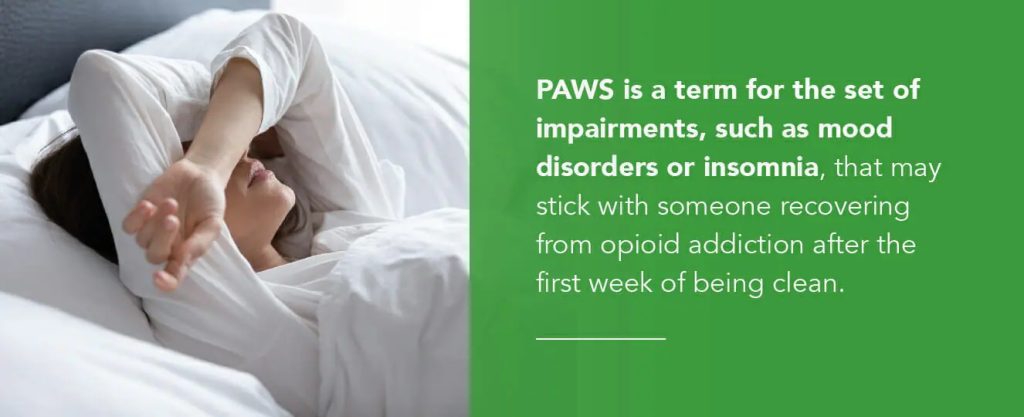
Approximately 90% of recovering opioid users experience the recurring symptoms that come with PAWS to some degree, most likely because of the changes that occur to the brain during substance abuse. Although PAWS symptoms can fluctuate in frequency and severity, these are the most common signs of the condition:
- Changes in mood
- Feelings of depression, anxiety or panic
- Increased irritability or stress
- Pessimism or apathy
- Obsessive-compulsive behaviors
- Insomnia
- Cravings
PAWS affects patients’ moods so greatly because of the physiologic changes that occur from drug abuse. When the brain’s functions change again during the detox process, there may be increased excitability. For this reason, prolonged opioid misuse may reduce the brain’s capacity to handle stress appropriately and those with a longer history of addiction are more at risk of experiencing PAWS symptoms.
Can You Die From Opioid Withdrawal?
Although uncommon, opioid withdrawal can lead to death. In extreme cases, the vomiting and diarrhea caused by opioid withdrawal can result in dehydration and hypernatraemia — an elevated blood sodium level — which often ends in heart failure. However, closely supervising a person going through withdrawal can prevent this issue.
To avoid a tragedy, anyone attempting to detox from an opioid addiction should be regularly monitored and administered the proper treatment to assist with managing withdrawal symptoms. Additionally, a patient who exhibits persistent vomiting, dehydration and sudden weight loss should receive medical attention immediately.
Opioid Addiction Recovery: How to Start
Although opioid withdrawal can be difficult and unpleasant, an opioid addiction can be managed effectively with the right treatment program. Even those with a severe or chronic addiction can regain their health and social function when they receive the right help. For those suffering from opioid addiction, the right combination of medically supervised detoxification, counseling and other therapies can provide hope of recovery.
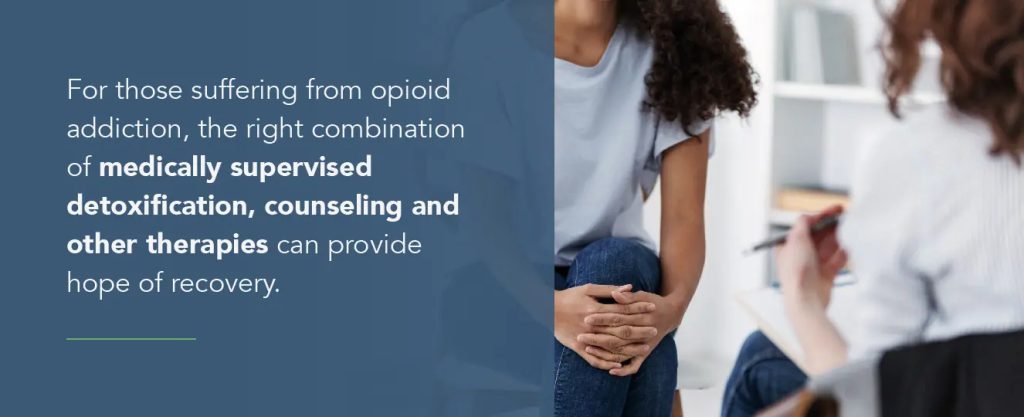
Because opioid addiction and detoxification involves many physical symptoms as well as psychological components, it is important to look for a rehabilitation center that offers a comprehensive treatment approach to address both aspects of recovery. At Synergy Recovery Services, an individual suffering from an opioid addiction can get top-quality outpatient care customized for their exact situation.
Located in Bakersfield, California, Synergy Recovery Services provides both medicinal and counseling resources to treat an opioid addiction from multiple angles. While addiction medications like Vivitrol or Suboxone can help lessen withdrawal symptoms to prevent relapse, counseling gets to the root of an opioid addiction by helping patients recognize triggers and develop coping mechanisms.
Learn About How Synergy Recovery Services Can Help
As an outpatient facility, Synergy Recovery Services offers a discreet and nonjudgmental environment for those battling an opioid addiction to get help. You’ll be able to receive treatment and individual or group counseling during the day, then conveniently return home to your family and friends at night.
When you’re ready to find out how our caring staff can help you get back to everyday activities without withdrawal symptoms, contact Synergy Recovery Services.


